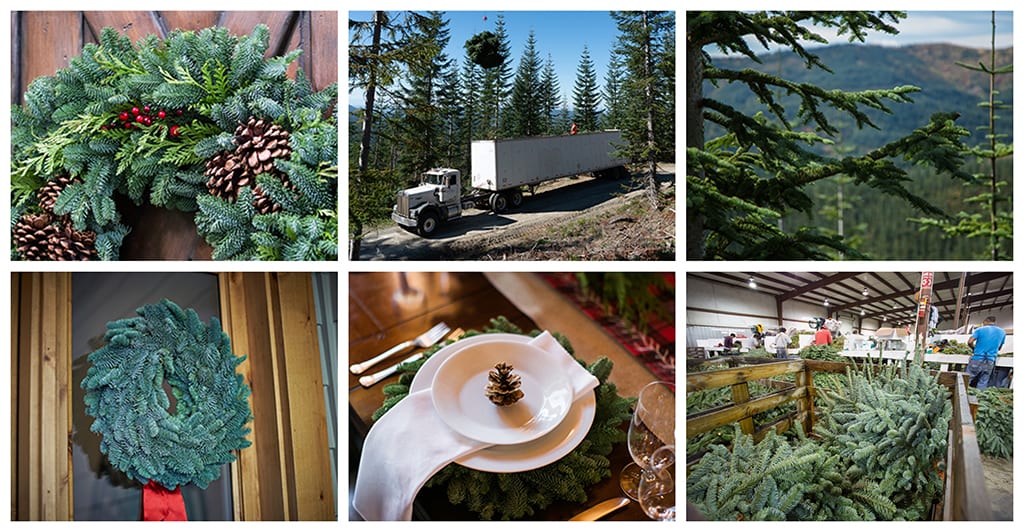
F.J. Trzuskowski, vice president of sales at Continental Floral Greens, based in Belfair, Washington, said evergreen supplies are strong for the holiday season, despite recent wildfires. (Photos courtesy of Continental Floral Greens.)
Nothing says Christmas like evergreens, which also provide florists with a foundation for holiday décor hardy enough to last the season — indoors or out. What happens when the annual harvest of mountain-grown noble fir, balsam fir, white pine, cedar, and other staples is threatened by the impacts of climate change, including wildfires in the West and dry conditions in other parts of the continental United States?
This year, it looks like supply will be sufficient to meet market demand. Wildfires raged, but the main harvest areas were spared. Extra care in purchasing and processing is warranted, nonetheless.
“If a tree has been stressed with dryness, you might not see the impact right away,” said F.J. Trzuskowski, vice president of sales at Continental Floral Greens, based in Belfair, Washington. “Fortunately, we are a bit spoiled in the Northwest, where we typically get rain the whole year.”
From January through August of 2020, precipitation was average in Oregon and above average in Washington State, which is home to Continental Floral Greens’ main supply of noble fir. Noble is considered the king of holiday evergreens, outlasting other types by a matter of weeks. That’s why harvesting of noble fir can begin as early as October 1 — as it must, if suppliers are to meet production deadlines for increasingly popular pre-made items such as wreaths and garlands.
With noble as the base, evergreens that are less durable (juniper, cedar) can be harvested later and mixed in to add a variety of textures, along with botanicals like pomegranates or pepperberries. Likewise, florists who purchase boxes of mixed evergreens should ideally seek out greens (except noble) that have been cut no earlier than the beginning of November — the later the better.
Maine (a primary source for balsam fir) and other New England states (except Vermont) experienced lower than average precipitation this year. The impact remains to be seen, but the danger is that dryness could lead to premature needle drop — a good reason for florists purchasing evergreens from this area to be extra careful in how they handle them.
Other highlights from this year’s supply chain heading into Christmas:
Holly. In the past, observers have noted that holly exposed to smoke from wildfires, especially the new growth, may be susceptible to berry drop — something to watch for this season.
Florida Christmas greens. Leyland cypress, arborvitae, Carolina sapphire, and a variety of specialty pines and cedars have the look of mountain-grown conifers but come on stems that are more slender and flexible, sold in grower bunches rather than by the pound. All of these can be grown in Florida, but some may be brought in from neighboring states (boxwood from North Carolina, ming pine from Georgia), said Katrina Sergent, sales manager at Florida foliage supplier Wm. F. Puckett Inc. Precipitation in the first eight months of 2020 was near normal for Florida, above normal for other parts of the Southeast.
“We do expect a good harvest this year,” Sergent reported. “Christmas greens here are rarely affected by hurricane damage. Most that are cultivated are grown in an open field with irrigation, and the plants are strong enough to withstand high winds.”
Look for advice on care and handling of evergreens in the October issue of Floral Management.
Bruce Wright is a contributing writer for the Society of American Florists.

